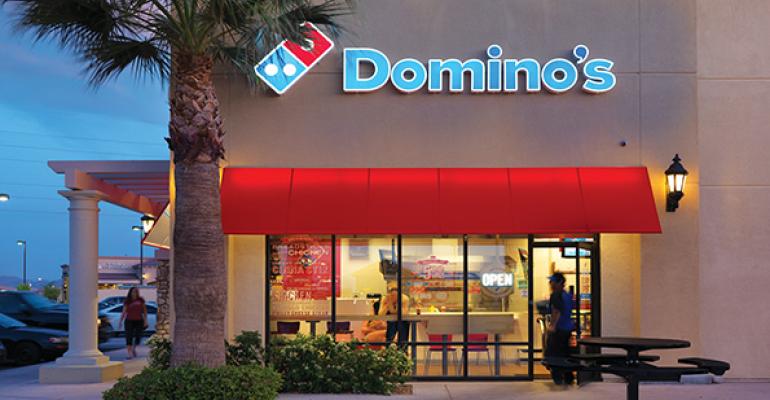Domino’s Pizza Inc. added 81 domestic locations in 2014, the most in nine years, as rising sales and profits gave franchisees more reason to build new units, the company said on Tuesday.
The chain’s domestic same-store sales rose 11.1 percent during the fourth quarter ended Dec. 28. Same-store sales have risen in 19 of the past 20 quarters, Domino’s CEO Patrick Doyle said. Average unit volumes have risen in each of the past six years. And average unit cash flow has risen from $50,000 in 2008 to $85,000 in 2014, Doyle said.
“Our system has made some real progress, and our franchisees are in the game,” Doyle said during a call Tuesday discussing fourth-quarter earnings. He added that all of the domestic units are being built by existing franchisees, even though many of those franchisees are investing in remodels under the company’s new “Pizza Theater” format.
“As unit economics get better, stores are going to get built because they should get built,” Doyle added. “The (return on investment) is strong. We’ve had another year of increasing profits for our franchisees. They’re more energized about the opportunities, so we’re seeing the builds happening.”
New unit development is key for Domino’s, which has about 5,000 locations in the U.S. The company has been on a remarkable run since the financial crisis of 2008. Sales have been increasing, customers are embracing technology and the company’s marketing is working.
Domino’s stock has responded. If an investor bought $1,000 of stock in October 2008, it would be worth nearly $27,000 today — a yield virtually unequalled in the restaurant business.
Yet its sales run hasn’t quite yielded more units in the U.S. — until now. Doyle noted that the company could add another 1,000 domestic units, largely by filling in existing markets.
Domino’s international division has been growing for years. The company’s international same-store sales rose 6.1 percent in the fourth quarter — its 84th straight quarter of international same-store sales growth. For the year, same-store sales rose 6.9 percent in overseas markets.
International operators are also building new units — adding 662 locations last year, giving Domino’s 6,562 locations outside the U.S. As a whole, the system added 743 locations, and now has 11,629 units worldwide.
“We’re selling pizza,” Doyle said. “It has broad taste appeal everywhere. It’s affordable. It’s customizable. And it’s fun.”
Domino’s same-store sales were far better than analysts had projected — Miller Tabak + Co. analyst Stephen Anderson said the results were 400 basis points above consensus expectations.
Anderson added that it was the best sales performance for the chain in more than four years, “even without the help of a significant new product launch.”
Net income was $48 million, or 91 cents a share, up from $44.7 million, or 78 cents a share, a year ago, results that disappointed Wall Street. Shares fell 1 percent on the news.
Doyle said the company has proven in recent years that it can maintain domestic same-store sales increases. He noted that the only negative quarter over the past 20 quarters in the U.S. came a year after its units reported a 14.3-percent same-store sales increase.
He also said the pizza sector might finally be experiencing some long-awaited consolidation.
Large chains like Domino’s and Papa John’s International Inc., have invested heavily in technology. Both now receive more than half of their orders through online or mobile channels rather than by phone. But independents have had a difficult time keeping up with that pace of investment.
“The last few years, you’ve seen some consolidation, and a big reason for that is technology,” Doyle said. “It’s just something the smaller players are not able to do, or not able to do anywhere as efficiently as we can.”
Domino’s has no plans to forget traditional customers who prefer using the phone to order their pizza, he said.
“We want our customers to access the brand the way they want to access the brand,” Doyle said. “If that means they want to order with their voice, that’s great.”
Contact Jonathan Maze at [email protected].
Follow him on Twitter: @jonathanmaze

